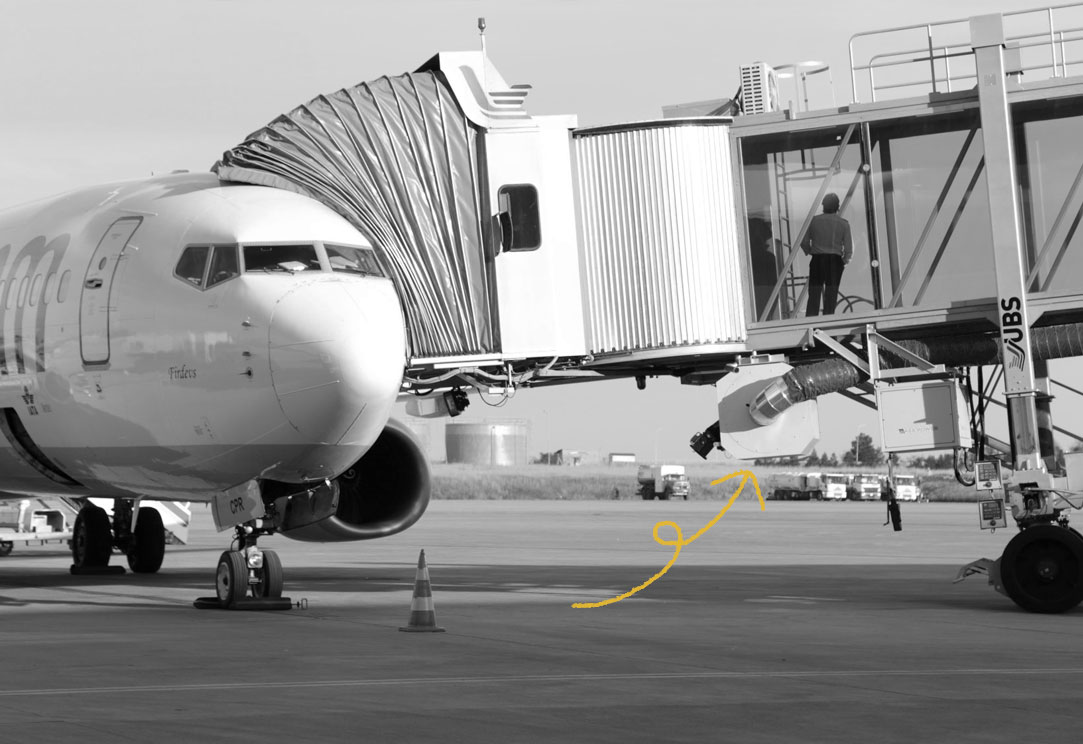Air travel used to involve passengers walking out onto the tarmac and boarding planes via large, moveable staircases. Then in the late 1950s, enclosed metal walkways that spanned the distance between airport terminals and airplanes began to show up at U.S. airports. According to archivists at United Airlines, the carrier began testing an “Air Dock” in 1954. The archivists consider that to be a direct ancestor of the telescoping passenger bridges we now know as jetways or jet bridges. (Today, they’re often called Jetways because that is the trademarked name, and, like Kleenex and other ubiquitous products, the brand name became synonymous with the item itself over time; the generic term is “jet bridge.”) It is unclear which airport was the first to implement jetways. We do know that O’Hare International Airport, LAX, LaGuardia, San Francisco International, and what is now known as Hartsfield-Jackson Atlanta International were all early adopters. We also know that around 1959, the Pacific Iron and Steel Corporation of Los Angeles was contracted by United Airlines to build 19 jet bridges. There is also archival evidence that Delta Air Lines contracted Pacific Iron and Steel around the same time for an order of 17 “Jetways” and two protypes were delivered to Atlanta in 1959. While they weren’t immediately implemented in every airport, by the 1970s and 1980s, jet bridges were becoming commonplace despite their hefty price of around $100,000 per unit. Today, jet bridges are extremely common, despite that fact that some travelers reportedly find them to be an unpleasant part of the airport experience.

Your go-to guide for weird history facts
Subscribe to the FREE daily email that makes learning about history fun.


